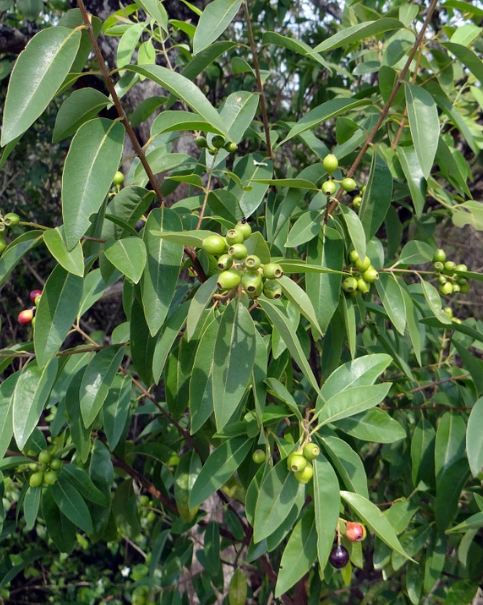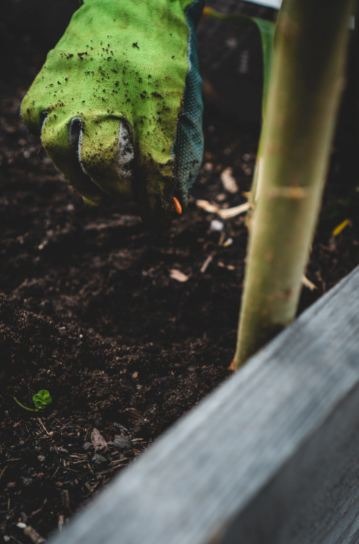Sandalwood has a distinct, calming scent that is familiar to most aromatherapists and essential oil users. Native sandalwood types in India and Hawaii were nearly farmed to extinction in the 1800s due to their highly coveted smell. The demand for sandalwood was so high among Hawaii’s selfish rulers that many agricultural laborers got forced to plant and harvest the only sandalwood. The people of Hawaii suffered a horrible famine for many years as a result of this. Many parts of India suffered, in the same way, to supply sandalwood to merchants. What is sandalwood, other than a pleasant essential oil?
What is a SandalWood Tree?
Sandalwood is a big shrub, a tree that thrives in zones 10 through 11. The majority of sandalwood variations are native to India, Hawaii, or Australia, even though there are over 100 species. Sandalwood can grow as 10-foot-tall (3 m.) shrubs or trees up to 30 feet tall, depending on the species and environment (9 m.).
Found in weak, dried clay or silty clay. Sandalwood trees can withstand strong winds, drought, salt spray, and scorching heat.
They thrive in bright sunlight but also thrive in partial shade. Sandalwood trees exist utilized as hedge, specimen species, shade trees, and drought-tolerant plants in the landscape.
The aromatic essential oil of sandalwood gets extracted from the plant’s blossoms and wood. As the natural essential oils become more potent with age, plants exist harvested between the ages of 10 and 30. Sandalwood essential oil is anti-inflammatory, antibacterial, and antispasmodic, in addition to having a pleasant scent. It is a natural astringent, stress reliever, memory booster, deodorant, wound healer, and astringent.
Sandalwood bark and leaves were used to make laundry detergent, shampoo for dandruff and lice, and cure wounds and body aches in India, Hawaii, and Australia.
How To Grow a Sandalwood Tree
1. Pick a Sunny Climate with Moderate Rainfall
Sandalwood thrives in plenty of sunshine, moderate rainfall, and mostly dry conditions throughout the year. They enjoy temperatures between 12° and 30° C (53° and 86° F). Annual rainfall should be between 850 and 1200 millimeters (33 and 47 inches). They enjoy temperatures between 12° and 30° C (53° and 86° F). Annual rainfall should be between 850 and 1200 millimeters (33 and 47 inches).
2. Choose a Soil That Drains Well
Sandalwood can not tolerate waterlogging, therefore avoid over-irrigation. Furthermore, make sure the water doesn’t drain too rapidly if you’re growing in sandy soil.
- Red ferruginous loam is preferred by sandalwood.
- Sandalwood may be grown in many soil types, including sandy soils, red clay soils, and vertisols. Vertisol is clay-rich black soil that shrinks dramatically in dry weather, resulting in deep mud fissures.
- Sandalwood may grow on rough or gravelly soil.
- The level of the solution must be in the range of 6.0 to 7.5.
3. Plant Sandalwood Next to Host Species
Sandalwood can only thrive in the presence of another plant that provides fixed nitrogen, a natural fertilizer. For the nutrients it requires, the sandalwood tree attaches its root to the host tree. Planting your sandalwood close to an established host species, such as long-lived wattles (acacia trees) or casuarinas, is ideal (a genus of tropical evergreens, including ironwoods and sheoaks)
- Put a host plant between the sandalwood trees and leave 1.6-2 meters between them (5.2-6.5 feet).
- Another ideal host species for sandalwood trees is Cajanus cajan (pigeon pea).
Germinating the Seeds
1. Soak and Dry the Seeds
Soak the sandalwood seeds in water for 24 hours before using them. Allow them to dry completely in the sun. After one day in the light, a crack should appear in the seed. It’s ready to germinate at this time.
2. Mix the Potting Soil
You’ll need red dirt, animal manure, and sand for this project. Mix two parts of red dirt, one part of manure, and one part sand in a wheelbarrow or other container. Take a planting tray and pour the mixture into it.
- Fill the planting hole with this mixture before sowing the seeds. Before you intend to plant them immediately outdoors.
3. Plant the Seeds
Small containers, such as a reused box or a planting tray, are ideal for sowing sandalwood seeds. Fill the container halfway with your homemade potting mix. Sow the seeds 34-1 inch (1.75-2.54 cm) below the soil’s surface.
4. Water the Seeds
Give a little water every day, but don’t overwater the soil because the sandalwood tree wants to be dry. Within 4 to 8 weeks, the seeds should start to sprout.
- Put your finger 1 inch (2.5 cm) into the soil to see if it needs to get watered. Water it if your finger feels dry
- Sandalwood seeds do not tolerate damp soil, therefore avoid saturating the potting soil.
Transplant the Seedling
1. Dig A Hole
Have a shovel. Make a planting hole 30 by 3 cm in size (11 by 1 inch)
2. Plant the Seedling of Sandalwood in the Ground
You’ll need to transplant the seedlings when they’re around a month old. Loosen the soil around the planting tray’s edges with your trowel. Pull up the sandalwood seedling with your fingertips along the tray’s sides. Gently place it in the planting hole, holding it by the root ball.
- Before it becomes too hot, it’s preferable to transplant the seedling in the morning.
- If you want to avoid waterlogging, make sure the space between the seedling and the planting hole exists filled with dirt.
- Sandalwood plants should be spaced between 2.5 and 4 meters (8 and 13 feet) apart.
- Make sure to sow the seedlings away from protected forest areas.
- The optimal season to cultivate sandalwood in India is between May and October.
3. Make Sure to Plant Seedlings Near the Host Plants
Plant the seedlings within 1 meter (3.3 feet) of the host plants. The tree will perish if it does not connect to the host species within the first two years.
- Before direct seeding of sandalwood, the host plants should be at least 1 meter (3.3 feet) tall.
4. During the First Year, Weed Thoroughly
During the first year, remove any weeds that are vying for moisture surrounding the sandalwood tree. Make sure that the host species does not deprive the young sandalwood tree of too much light. Tip the host tree to the side or prune it if it begins to grow above the sandalwood.
- Any weeds that have started to grow up the sandalwood should be removed.
Maintenance of Tree
1. During Dry Periods, Water the Sandalwood Tree
If you have a dry spell, give the sandalwood tree some water. Give it half a liter (.5 quart) of water twice a week. Sandalwood should be watered in the evening to avoid excessive evaporation.
- You’ll need to water the plants more frequently if your area doesn’t get the recommended 850-1200 millimeters (33-47 inches) of rain each week.
2. Prune the Host Species
You’ll need to cut back the host species if it starts to dominate the sandalwood tree. Otherwise, the sandalwood tree might get deprived of sufficient light. Prune the host plant to be a little shorter than the sandalwood plant, allowing the sandalwood to get enough sun.
3. Keep Wild Herbivores Away From Your Sandalwood Tree
Because herbivores enjoy the taste of sandalwood trees, you’ll want to keep them safe. Put up a fence around the perimeter of your sandalwood tree to keep herbivores from eating it.
Bottom Line
Sandalwood is one of the world’s most expensive woods. In recent years, the production of sandalwood has dropped while the demand has been growing higher. Production has plummeted from 4,000 tons in the 1950s to 500 tons a year.
The article makes sure to provide all the details about sandalwood growth and maintenance. Now you can grow one yourself. It has several uses such as Lightening your skin.
We recommend checking the Five best Sandalwood powder brands.





